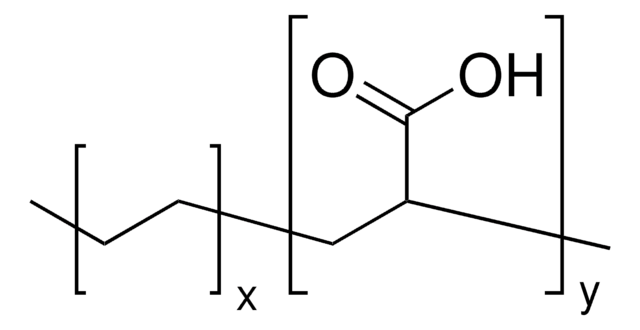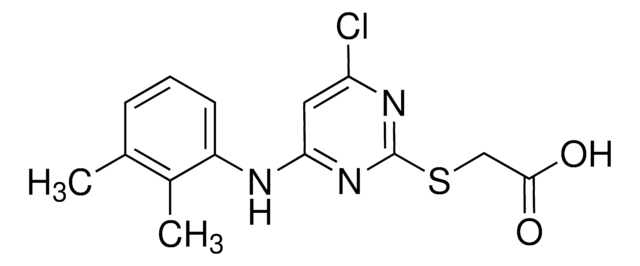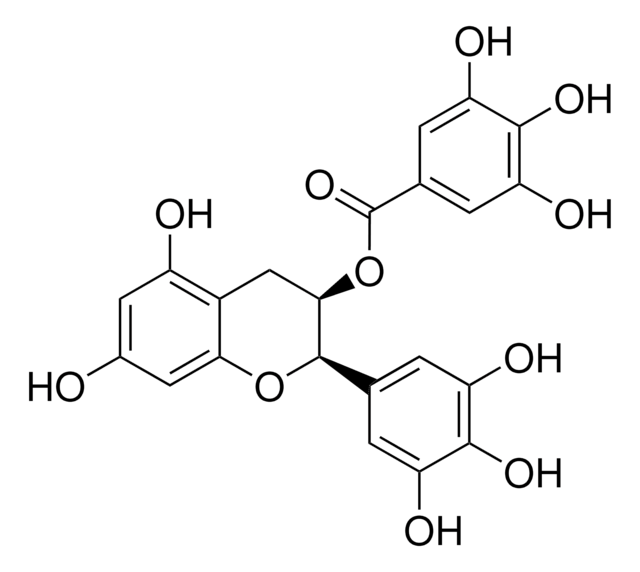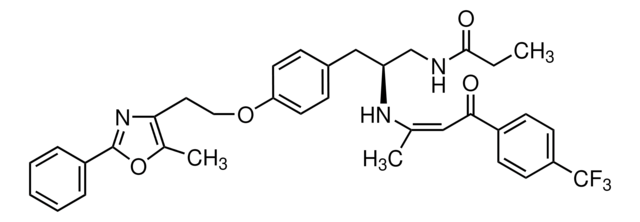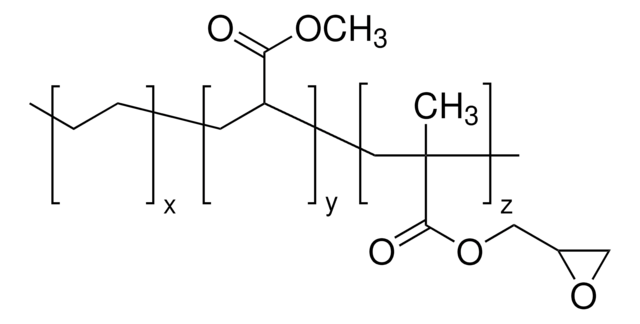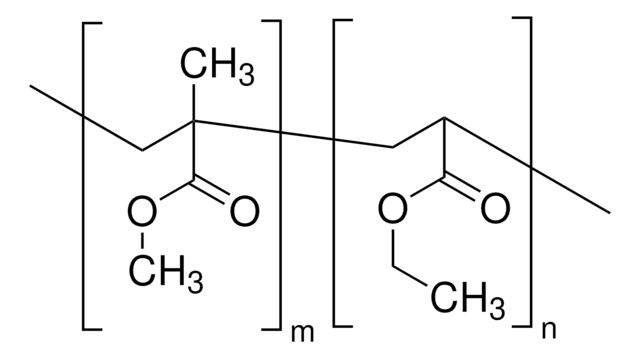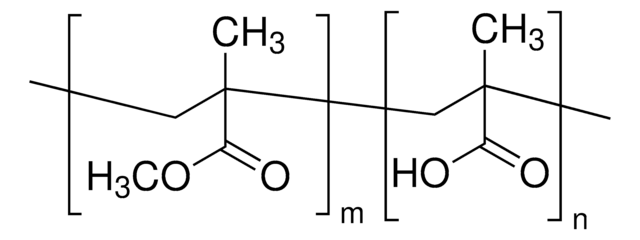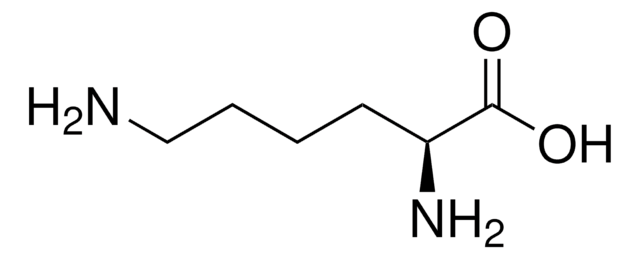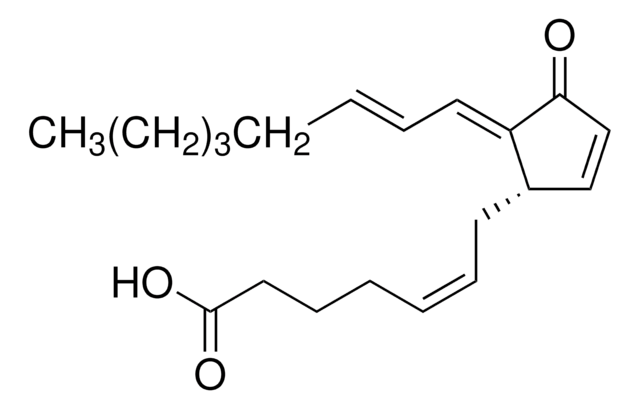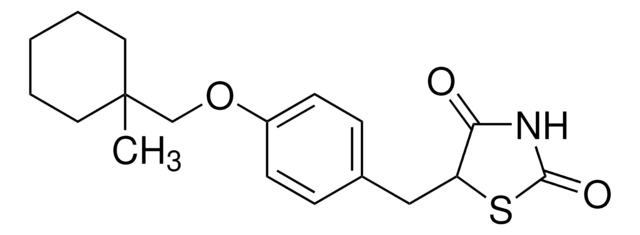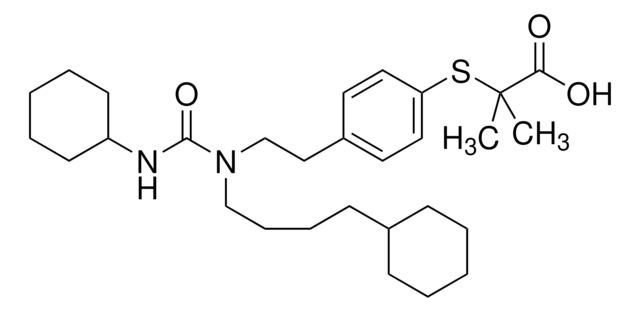M6191
GW9662
>98% (HPLC)
Sinónimos:
2-Chloro-5-nitro-N-phenylbenzamide
About This Item
Productos recomendados
Ensayo
>98% (HPLC)
Formulario
powder
color
white
solubilidad
DMSO: 26 mg/mL
H2O: insoluble
temp. de almacenamiento
2-8°C
cadena SMILES
[O-][N+](=O)c1ccc(Cl)c(c1)C(=O)Nc2ccccc2
InChI
1S/C13H9ClN2O3/c14-12-7-6-10(16(18)19)8-11(12)13(17)15-9-4-2-1-3-5-9/h1-8H,(H,15,17)
Clave InChI
DNTSIBUQMRRYIU-UHFFFAOYSA-N
Información sobre el gen
human ... PPARG(5468)
Aplicación
Acciones bioquímicas o fisiológicas
Características y beneficios
Información legal
Código de clase de almacenamiento
11 - Combustible Solids
Clase de riesgo para el agua (WGK)
WGK 3
Elija entre una de las versiones más recientes:
Certificados de análisis (COA)
¿No ve la versión correcta?
Si necesita una versión concreta, puede buscar un certificado específico por el número de lote.
¿Ya tiene este producto?
Encuentre la documentación para los productos que ha comprado recientemente en la Biblioteca de documentos.
Los clientes también vieron
Nuestro equipo de científicos tiene experiencia en todas las áreas de investigación: Ciencias de la vida, Ciencia de los materiales, Síntesis química, Cromatografía, Analítica y muchas otras.
Póngase en contacto con el Servicio técnico
